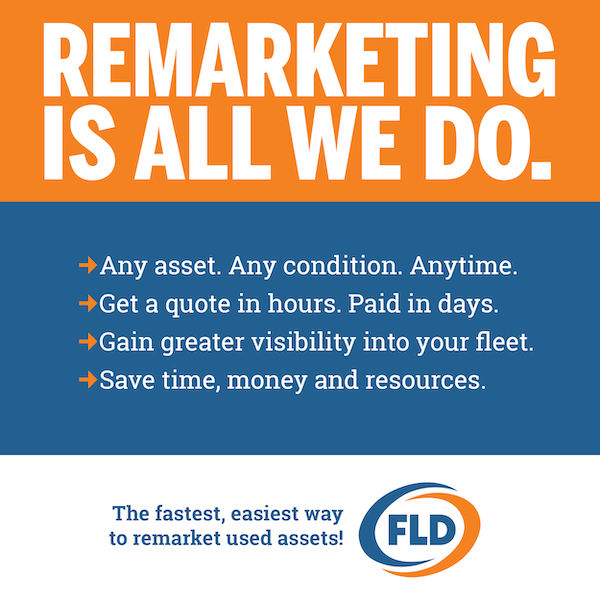
By John Petrucelli, Vice President of R&D and Product Innovation, Motus
It may come as no surprise, but the number one question we hear from businesses with mobile employees is: How can we cut costs in our vehicle program?
The truth is, cost savings are easier than ever to achieve in today’s digital age. Not by paying mobile workers less or automating and diminishing your workforce, but by clearly understanding how you can transform processes with new technology. What’s really holding businesses back from cost savings is a lack of understanding around how seamless these changes can be.
What’s Your Current Vehicle Program?
For a long time, companies have thought about their vehicle programs in three main categories: company-provided vehicles, flat allowance programs and cents-per-mile programs.
Company-provided vehicles fill the legacy definition of a fleet. Perhaps you have a specific type of vehicle or branding needs, in which case a company-provided car is the best – and perhaps only – option. You’re in the business of driving, and it makes sense that you provide the vehicles for it. In most other cases, however, company-provided cars are the most expensive option for the business. They require a lease or large capital cost upfront. Businesses can also be liable for accidents involving the company-provided cars, which can cause business expenses to skyrocket. Even small repairs add up, regardless of whether damage was incurred on the job or outside of typical business hours.
Flat allowance and cents-per-mile programs enable businesses to avoid these costs by reimbursing employees for the business use of their personal vehicles. In vehicle geek-speak, we call these “grey fleets.”
Flat allowance programs use a single, company-wide amount to reimburse all employees for any business travel (e.g. a flat $600 per month, per employee payment). The drawback here is that car allowances lack accuracy. Some employees are reimbursed more than their actual expenses, while others may be reimbursed less. Mobile workers in expensive cities like New York may “lose” in this type of program, while others in less expensive cities “win.” As a whole, the business is often on the losing side as their flat allowance program is subject to both Federal Insurance Contributions Act (FICA) taxes and income taxes. Not to mention a risk of lawsuits if your mobile employees are not reimbursed the right amount.
Cents-per-mile rates, in which companies reimburse based on a simple question of a Flat Rate x Mile Driven = Reimbursement Amount, encounter similar problems as flat allowances. They are inaccurate and neglect to factor in regional and individualized expenses. Given the complexity of calculating variable driving costs, many companies mistakenly use the IRS business mileage standard to determine mileage reimbursements and reimburse employees tax-free. However, the IRS business mileage standard is not a recommended reimbursement rate. (We’ll explain the difference shortly.)
So, What Other Option Is There?
There is another reimbursement method for personally-owned vehicles called Fixed and Variable Rate (FAVR) reimbursement. This type of program provides personalized, tax-free reimbursement rates to each mobile employee based on their location-specific costs and monthly business mileage. FAVR is the only accurate and defensible way to calculate reimbursement rates because it accounts for both fixed costs (such as insurance premiums, registration and license fees, depreciation and taxes) and variable costs (such as fuel, maintenance, tires and oil) which all change based on mileage.
Using this IRS-compliant reimbursement methodology, businesses can remove tax liabilities while also applying real-time geographic cost data – ultimately enabling companies to save thousands of dollars per employee each year.
Why Haven’t I Head of FAVR?
Sound too good to be true? That’s because, until recently, it was.
Maintaining IRS-compliance using FAVR has historically been expensive and inefficient. Mobile workers were required to manually keep granular logs of their locations, destinations, vehicle mileage, fuel expenses and other information. At the same time, the businesses that manage them had to track factors like insurance, regional fuel and maintenance costs and more. When these two data dumps came together, an administrator was left to sort everything out into something coherent.
Efficient? Not at all. Productivity stood no chance.
What’s changed today is that our modern technology has made extremely accurate reimbursement not only possible, but cost-effective. Using GPS-verified mileage tracking applications, mobile employees can accurately track their time, mileage and locations with minimal extra work. These digital mileage logs can be seamlessly integrated with big data stores from vehicle reimbursement programs that ensure reimbursements are specific to each mobile worker’s location, vehicle make and model, actual costs and more. This data can be taken in and exported into tax filing forms, expense software and even third-party systems like CRM platforms to help businesses reimburse their mobile workers efficiently and accurately.
Regardless of the program – fleet or FAVR – employers need to reimburse the mobile workforce properly. Today’s technology can help with either option – whether it’s helping fleet managers administer an effective program or helping employers accurately record all the fixed and variable costs mobile workers incur in an IRS-compliant manner. While FAVR programs may not be right for every business, they are certainly worth a second look. If you have mobile employees that drive throughout the course of the business day, do yourself a FAVR and consider whether it’s worth transitioning to a technology-enabled vehicle program to take you into the future.


